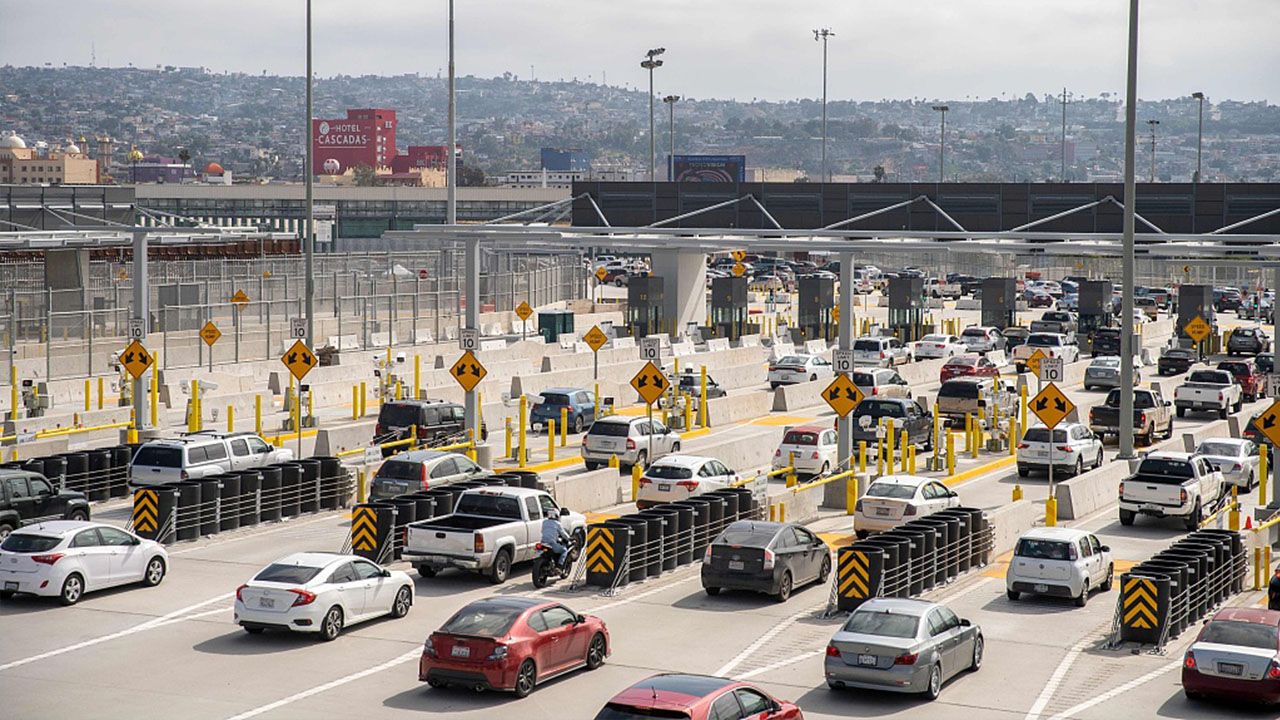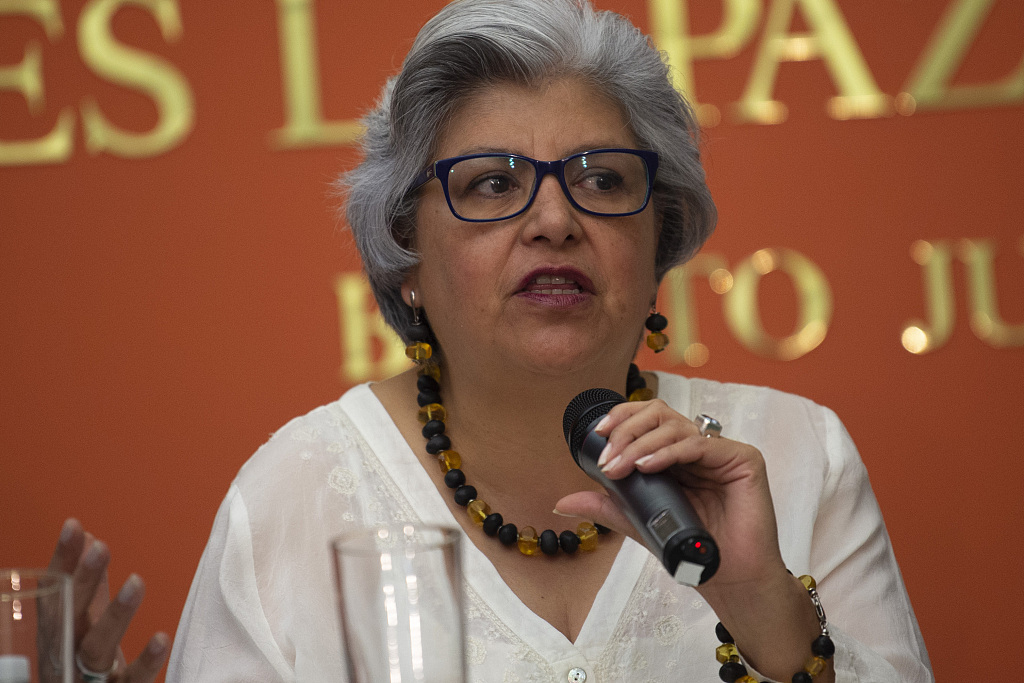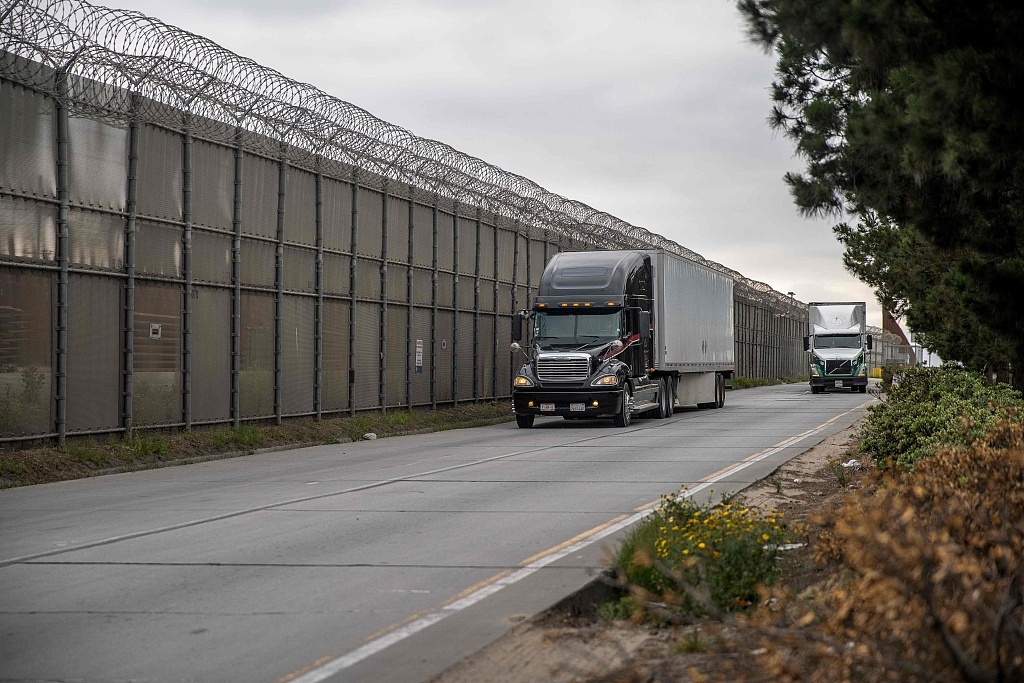
Opinion
21:03, 04-Jun-2019
Despite a trade agreement, Trump threatens Mexico with new tariffs
William Jones

Editor's note: William Jones is the Washington Bureau Chief for Executive Intelligence Review and a non-resident Fellow of the Chongyang Institute for Financial Studies at Renmin University. The article reflects the author's opinion, and not necessarily the views of CGTN.
U.S. President Trump seems almost obsessed with his newfound ability to get his way using tariffs as a weapon. Concerned with the continued flow of migrants on the U.S. border with Mexico, which he blames on Mexico's rather limited ability to prevent migrants from coming through their country to the U.S. border, he is now threatening Mexico with a five percent tariff starting on June 10.
The tariffs would increase to 10 percent on July 1 and then an additional five percent every month for three months. The final 25 percent tariff would remain until Mexico “substantially stops the illegal inflow of aliens coming through its territories.”

Mexico's Economy Secretary Graciela Marquez Colin speaks during a press conference with the Mexican delegation negotiating tariffs with the U.S. officials at the Mexican embassy in Washington, DC, U.S. June 3, 2019. /VCG Photo
Mexico's Economy Secretary Graciela Marquez Colin speaks during a press conference with the Mexican delegation negotiating tariffs with the U.S. officials at the Mexican embassy in Washington, DC, U.S. June 3, 2019. /VCG Photo
The sudden measures created a firestorm from both consumer organizations and business leaders as well as from both opponents and friends in the U.S. Congress. Even Trump's own advisers, like Treasury Secretary Steve Mnuchin and USTR Representative Robert Lighthizer, no “slouch” himself in wielding tariffs as a weapon, were opposed to the measure.
At a news conference in Mexico City on May 30, Mexico's deputy foreign minister for North America, Jesus Seade, said the tariffs would be “disastrous” and that Mexico would respond “energetically” if they were imposed. Foreign Minister Marcelo Ebrard has also arrived in Washington for emergency meetings with his counterparts in Washington on June 5 in an attempt to find a way out of the impasse.
The moves by the president also jeopardize the new trade agreement which has been negotiated with Mexico and Canada, the United States-Mexico-Canada Agreement, USMCA. Containing more stringent terms than the North American Trade Agreement (NAFTA), which it replaced, the treaty would under normal conditions face an uphill climb in getting ratified in the U.S. Senate, a climb which has become even more daunting with new tariffs placed on Mexico. It could also lead to Mexico pulling out of the agreement entirely.
It is questionable as to how much Mexico can do to stop the flow of migrants coming through its country to the U.S. border. Under pressure from the Trump administration Mexico has already increased the number of detentions of migrants in Mexico, but is no doubt reticent, both politically and morally, to take any stronger methods to cut off entirely the entry of poor migrants coming into its country, many of them fleeing the rampant violence that has been characteristic of the Central American nations.
Mexico's President Lopez Obrador, although a leftist, has developed something of a working relationship with the conservative U.S. president. And they came to what looked like something of an agreement to begin dealing with the underlying “immigration problem” by putting together an economic program that would improve life in the poverty and violence-stricken Central American countries. The program would focus on infrastructure, energy, the electricity grid, natural gas, etc. Lopez Obrador had sent President Trump a letter to that effect which was well received.
In November 2018, Foreign Minister Marcelo Ebrard talked of a 20 billion U.S. dollars “Marshall Plan” for southern Mexico and another 20 billion U.S. dollars for northern Central America. This would be financed partially by Mexico with help from the United States and other interested countries.
Ebrard had presented these plans to Deputy Secretary of State John Sullivan and presidential adviser Jared Kushner on May 24. But the exact amounts needed and concrete commitments from the various parties still remain to be resolved. In its own national budget, Mexico has pledged 10 billion U.S. dollars over a period of 10 years for this project.

Cargo trucks drive pass the secondary fence that divides the United States and Mexico driving towards Mexico from Otay Mesa, California, U.S. May 31, 2019. /VCG Photo
Cargo trucks drive pass the secondary fence that divides the United States and Mexico driving towards Mexico from Otay Mesa, California, U.S. May 31, 2019. /VCG Photo
President Trump's tariffs, however, can throw a monkey wrench into all of this and seriously damage the positive relationship that has been established with the Mexican president. Lopez Obrador still hopes to salvage the situation. In a letter to President Trump written on May 31, he spoke of the need to avoid confrontation, deepen dialogue and find a long-term solution to the problem of migration with the U.S. Perhaps the tariff threat is simply another example of President Trump utilizing his “maximum pressure” campaign to achieve his goals.
But if the tariffs are really levied and there is no indication of them being lifted any time soon, the effect on Mexico will be absolutely devastating. Mexico sends nearly 80 percent of its exports to the United States and even the five percent initial tariffs will be a serious blow to the Mexican economy.
But also the U.S. consumer will see prices skyrocket on all sorts of staple goods, particularly agricultural products, which provide the bulk of Mexican exports. Combined with the effects of the tariffs already placed on Chinese goods, U.S. families will be tightening their belts considerably. And there is little hope that U.S. farmers can rapidly shift from producing soybeans to producing avocados or oranges in any short period of time. Poor and low-income families will suffer the worst.
And what effects this will have on the financial markets are hard to predict. The Dow has already taken a tumble on President Trump's announcement and investors are running to safety in U.S. Treasury bills, uncertain how the economy will react to these measures. The effects could also lead to a financial blow-out in the bloated U.S. financial markets.
And given the structural nexus of the supply chain with Mexico, hundreds of thousands of American jobs could also be lost in the fray as a result of this new chapter in “the trade war.” And there can be no political upside to this strategy for a president who hopes to be reelected in 2020. But how long it will take for him to realize that – and to radically change course – remains to be seen.
(If you want to contribute and have specific expertise, please contact us at opinions@cgtn.com.)

SITEMAP
Copyright © 2018 CGTN. Beijing ICP prepared NO.16065310-3
Copyright © 2018 CGTN. Beijing ICP prepared NO.16065310-3